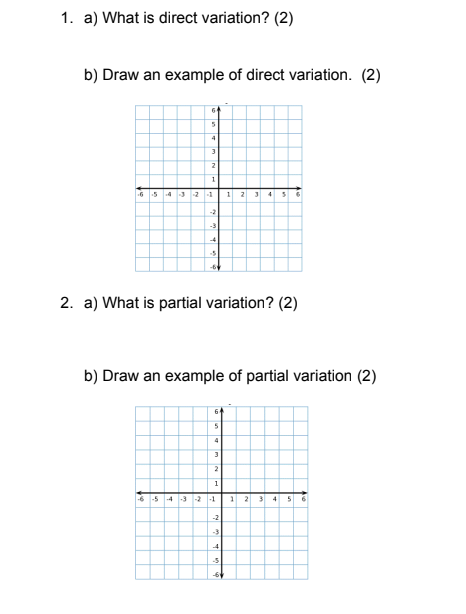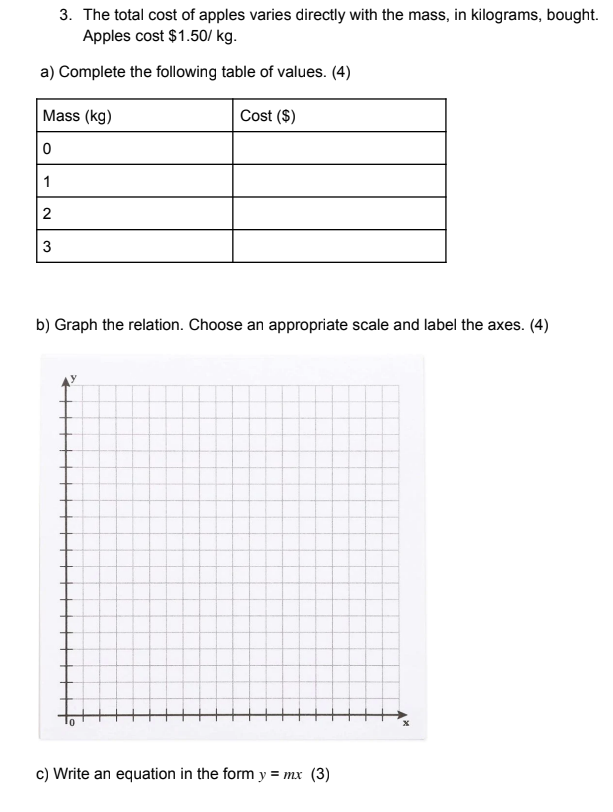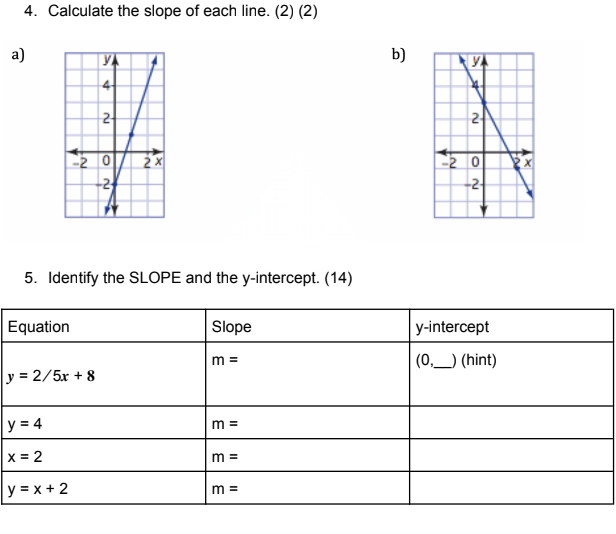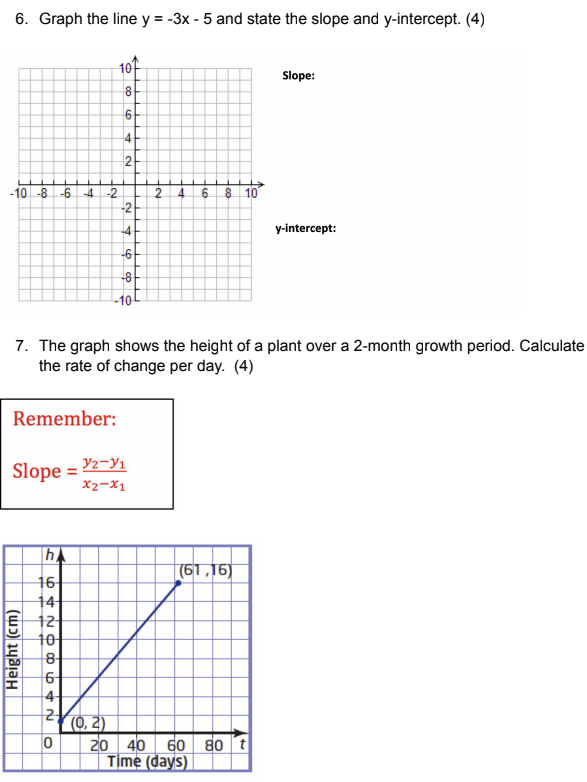Answered step by step
Verified Expert Solution
Question
1 Approved Answer
1. a) What is direct variation? (2) b) Draw an example of direct variation. (2) 6 5 4 3 2 1 6 54 J




1. a) What is direct variation? (2) b) Draw an example of direct variation. (2) 6 5 4 3 2 1 6 54 J -2 -1 1 2 3 4 6 -2 -3 4 -5 2. a) What is partial variation? (2) b) Draw an example of partial variation (2) 6 5 4 3 2 1 6 5 4 3 2 1 1 2 3 45 6 -2 -3 4 3. The total cost of apples varies directly with the mass, in kilograms, bought. Apples cost $1.50/kg. a) Complete the following table of values. (4) Mass (kg) 0 1 2 3 Cost ($) b) Graph the relation. Choose an appropriate scale and label the axes. (4) c) Write an equation in the form y = mx (3) a) 4. Calculate the slope of each line. (2) (2) 4 2 20 2 2x b) YA 2 -20 02 -2 AX 5. Identify the SLOPE and the y-intercept. (14) y-intercept Equation Slope m = y = 2/5x+8 y=4 m = x=2 m = y=x+2 m = (0, _) (hint) Height (cm) 6. Graph the line y = -3x-5 and state the slope and y-intercept. (4) 10 co 8 Slope: 6 4 2 -10 -8 -6. -4-2 2 4 6 8 10 27 -2 -4 y-intercept: -6 -8 -10L 7. The graph shows the height of a plant over a 2-month growth period. Calculate the rate of change per day. (4) Remember: Slope = 2-1 x2-x1 h (61.16) 16 14 12 10 208642 4 2 0 (0,2) 20 40 60 80 t Time (days)
Step by Step Solution
There are 3 Steps involved in it
Step: 1

Get Instant Access to Expert-Tailored Solutions
See step-by-step solutions with expert insights and AI powered tools for academic success
Step: 2

Step: 3

Ace Your Homework with AI
Get the answers you need in no time with our AI-driven, step-by-step assistance
Get Started


